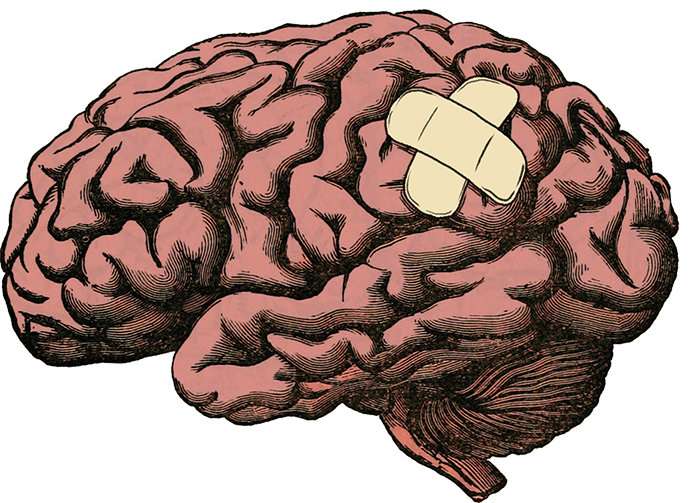Legal landscape on concussion liabilities may be shifting

It seems as though almost weekly, we receive newly published information or reported decisions that appear to confirm how very little we know about the true impact of head injuries within a sport context.
Amateur and professional athletes who have suffered a concussion are generally allowed to return to sport after they complete a graded exercise protocol that focuses on concussion symptoms, which is referred to as the return to play (RTP) protocol. The Public Health Agency of Canada recently published the Canadian Guideline on Concussion in Sport outlining these protocols, which provide recommendations – aimed at amateur participants – on "the recognition, medical diagnosis, and management of athletes who sustain a suspected concussion during a sport activity."
The guideline recommends strategies that help a concussed athlete make a gradual return to sport-related activity through a series of different stages, with the ultimate goal of a return to normal game play. The final step requires the athlete to be medically cleared by a doctor or a nurse practitioner, after which he or she can 'safely' return to sport.
However, a recently published study, conducted by researchers at St. Michael's Hospital in Toronto, calls some of the assumptions behind the RTP protocol into question. The purpose of the study was to determine whether, following the RTP protocol, differences in brain structure and function remain present following acute injury.
The results showed at the time athletes were cleared to return to their sport, their brain structure and function were still altered, with greater changes in brain function for athletes with a longer recovery time. This suggests there were still some lingering biological effects on athletes, even though they felt fine physically and no longer showed symptoms.
While this study provides some insight into the effect on the brain following acute injury, it by no means conclusively undermines the RTP protocol. The results suggest the brain does not return to normal immediately following a completed RTP protocol, but it does not identify whether the brain will ever return to normal, or if it has effectively settled at a new normal. That being said, the study proves the structure and function of the brain do not return to normal after recovering from the symptoms of a concussion, and technology (such as advance MRI and functional MRI) could play a key role in learning more about concussions going forward.
The results of this study may be of particular concern for parents with children playing contact sports. While the RTP protocol has been commonplace for years, this study suggests a lack of symptoms may not establish a complete recovery from the concussion. One might expect parents may look at this report as yet another confirmation contact sports should not be a part of their children's physical activity options or they should simply forbid their children from playing contact sports altogether, but it is unlikely that will happen.
HBO Real Sports conducted a survey in 2013 that asked more than 1,000 Americans whether the information that had been released over the years regarding the connection between concussions from playing football and long-term brain injuries influenced whether they would allow their kids to play football. Surprisingly, 61 per cent of parents with a child 18 years old or younger responded the information concerning concussions has made no difference in whether they would allow their son to play football. Most respondents were of the view that the benefits of football outweighed the risk of injury and playing football is a good way to build character.
While this was an American survey, these results appear to show the risk of concussion is not enough to deter parents from allowing their children to play football. It is more likely, with the release of the Canadian Guideline on Concussion in Sport, parents will make a greater effort to ensure their children are playing in a safe manner and receiving the proper care following a concussion.
It is also unlikely the study will affect the National Football League (NFL) or Canadian Football League (CFL). Football is a culture, with millions of people spending hours in front of their TVs on Sundays watching the games. With the release of the movie Concussion and the billion-dollar settlement between the NFL and players who have sustained long-term neurological conditions, the public has been made aware of the damaging effects of concussions.
With its widespread following and the addiction of both Americans and Canadians to the game, it is unlikely the results of the recent study on differences in brain structure are enough to take down one of the biggest sports industries in North America.
However, there may be a change in Canadian jurisprudence that could affect the liability of the sports industry going forward. The case of Bruce v. Cohon, 2016 BCSC 419, which could be heard by the Supreme Court of Canada in the coming months if the court grants leave, may set some precedent concerning how Canadian organizations, such as the CFL, will be held liable.
Arland Bruce, an ex-CFL player who suffered multiple concussive hits while playing in the league, alleged he was permitted to play for a different CFL team the next season, even though he was still displaying ongoing effects of his concussion. Bruce's notice of civil claim was struck down. It was deemed Bruce's claim, which was an issue of health and safety included in his collective bargaining agreement, should have been resolved by arbitration.
This decision was challenged, but it was dismissed by the British Columbia Court of Appeal. Bruce has now sought leave to appeal to the Supreme Court, but a decision on his application likely won't be made until the end of the year. Should he ultimately be successful, football players could be allowed to bring civil claims for their injuries sustained during sport.
















